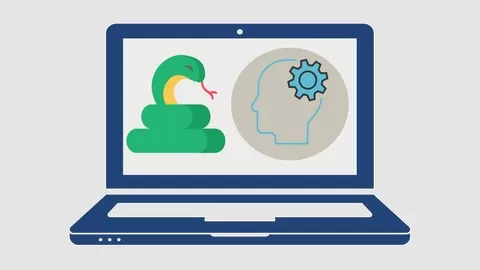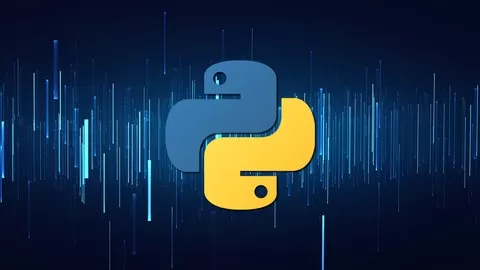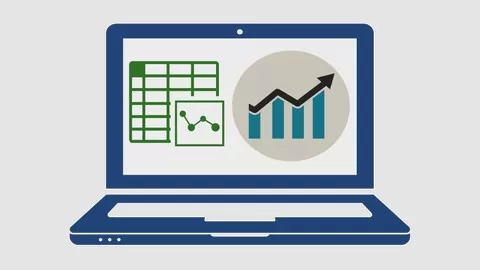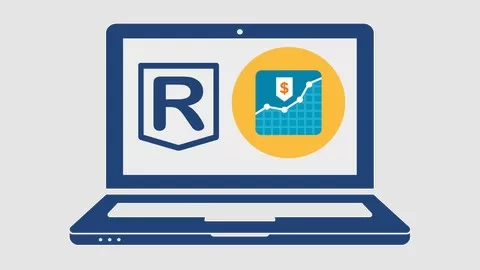Full Course Content Last Update 07/2018
Learn regression machine learning through a practical course with Python programming language using S&P 500® Index ETF prices historical data for algorithm learning. It explores main concepts from basic to expert level which can help you achieve better grades, develop your academic career, apply your knowledge at work or do your business forecasting research. All of this while exploring the wisdom of best academics and practitioners in the field.
Become a Regression Machine Learning Expert in this Practical Course with Python
•Read S&P 500® Index ETF prices data and perform regression machine learning operations by installing related packages and running code on Python IDE.•Create target and predictor algorithm features for supervised regression learning task.•Select relevant predictor features subset through Student t-test, ANOVA F-test, false discovery rate and family-wise error rate univariate filter methods.•Choose relevant predictor features subset through recursive feature elimination deterministic wrapper method. •Designate relevant predictor features subset through least absolute shrinkage and selection operator embedded method.•Extract predictor features transformations through principal component analysis.•Train algorithm for mapping optimal relationship between target and predictor features.•Test algorithm for evaluating previously optimized relationship forecasting accuracy through mean absolute error and root mean squared error scale-dependent metrics.•Calculate generalized linear models such as linear regression or Ridge regression and select optimal linear regression coefficients regularization parameter through time series cross-validation.•Compute similarity methods such as k nearest neighbors and select optimal number of nearest neighbors parameter through time series cross-validation.•Estimate frequency methods such as decision tree and select optimal maximum tree depth parameter through time series cross-validation.•Calculate ensemble methods such as random forest or gradient boosting machine and select optimal maximum trees depth parameter through time series cross-validation.•Compute maximum margin methods such as linear or non-linear support vector machines and select optimal error term penalization parameter through time series cross-validation.•Estimate multi-layer perceptron methods such as artificial neural network and select optimal node connection weight decay regularization parameter through time series cross-validation.•Compare regression machine learning algorithms training and testing.Become a Regression Machine Learning Expert and Put Your Knowledge in Practice
Learning regression machine learning is indispensable for data mining applications in areas such as consumer analytics, finance, banking, health care, science, e-commerce and social media. It is also essential for academic careers in data mining, applied statistical learning or artificial intelligence. And it is necessary for business forecasting research.
But as learning curve can become steep as complexity grows, this course helps by leading you step by step using S&P 500® Index ETF prices historical data for algorithm learning to achieve greater effectiveness.
Content and Overview
This practical course contains 56 lectures and 6 hours of content. It’s designed for all regression machine learning knowledge levels and a basic understanding of Python programming language is useful but not required.
At first, you’ll learn how to read S&P 500® Index ETF prices historical data to perform regression machine learning operations by installing related packages and running code on Python IDE.
Then, you’ll define algorithm features by creating target and predictor variables for supervised regression learning task. Next, you’ll only include relevant predictor features subset or transformations in algorithm learning through features selection and features extraction procedures. For features selection, you’ll define univariate filter methods, deterministic wrapper methods and embedded methods. For univariate filter methods, you’ll implement Student t-test, ANOVA F-test, false discovery rate and family-wise error rate. For deterministic wrapper methods, you’ll implement recursive feature elimination. For embedded methods, you’ll implement least absolute shrinkage and selection operator or lasso. For features extraction, you’ll implement principal component analysis. After that, you’ll define algorithm training through mapping optimal relationship between target and predictor features within training range. For algorithm training, optimal parameters selection or fine tuning, bias-variance trade-off, optimal model complexity and time series cross-validation are defined. Later, you’ll define algorithm testing through evaluating previously optimized relationship forecasting accuracy through scale-dependent metrics within testing range. For scale-dependent metrics, you’ll define mean absolute error and root mean squared error.
After that, you’ll define generalized linear models such as linear regression and Ridge regression. Next, you’ll implement algorithm training for mapping optimal relationship between target and predictor features within training range. For algorithm training, you’ll use only relevant predictor features subset or transformations through principal component analysis procedure and linear regression coefficients regularization optimal parameter estimation or fine tuning through time series cross-validation. Later, you’ll implement algorithm testing for evaluating previously optimized relationship forecasting accuracy through scale-dependent error metrics within testing range.
Then, you’ll define similarity methods such as k nearest neighbors. Next, you’ll implement algorithm training for mapping optimal relationship between target and predictor features within training range. For algorithm training, you’ll use only relevant predictor features subset or transformations through principal component analysis procedure and number of nearest neighbors optimal parameter estimation or fine tuning through time series cross-validation. Later, you’ll implement algorithm testing for evaluating previously optimized relationship forecasting accuracy through scale-dependent error metrics within testing range.
After that, you’ll define frequency methods such as decision tree. Next, you’ll implement algorithm training for mapping optimal relationship between target and predictor features within training range. For algorithm training, you’ll use only relevant predictor features subset or transformations through principal component analysis procedure and maximum tree depth optimal parameter estimation or fine tuning through time series cross-validation. Later, you’ll implement algorithm testing for evaluating previously optimized relationship forecasting accuracy through scale-dependent error metrics within testing range.
Then, you’ll define ensemble methods such as random forest and gradient boosting machine. Next, you’ll implement algorithm training for mapping optimal relationship between target and predictor features within training range. For algorithm training, you’ll use only relevant predictor features subset or transformations through principal component analysis procedure and maximum tree depth optimal parameter estimation or fine tuning through time series cross-validation. Later, you’ll implement algorithm testing for evaluating previously optimized relationship forecasting accuracy through scale-dependent error metrics within testing range.
After that, you’ll define maximum margin methods such as linear and non-linear or radial basis function support vector machines. Next, you’ll implement algorithm training for mapping optimal relationship between target and predictor features within training range. For algorithm training, you’ll use only relevant predictor features subset or transformations through principal component analysis procedure and error term penalization optimal parameter estimation or fine tuning through time series cross-validation. Later, you’ll implement algorithm testing for evaluating previously optimized relationship forecasting accuracy through scale-dependent error metrics within testing range.
Then, you’ll define multi-layer perceptron methods such as artificial neural network. Next, you’ll implement algorithm training for mapping optimal relationship between target and predictor features within training range. For algorithm training, you’ll use only relevant predictor features subset or transformations through principal component analysis procedure and node connection weight decay regularization optimal parameter estimation or fine tuning through time series cross-validation. Later, you’ll implement algorithm testing for evaluating previously optimized relationship forecasting accuracy through scale-dependent error metrics within testing range. Finally, you’ll compare regression machine learning algorithms training and testing.
Learn to create Machine Learning Algorithms in Python and R from two Data Science experts. Code templates included.
4.6
★★★★★ 4.6/5
876,088 students












